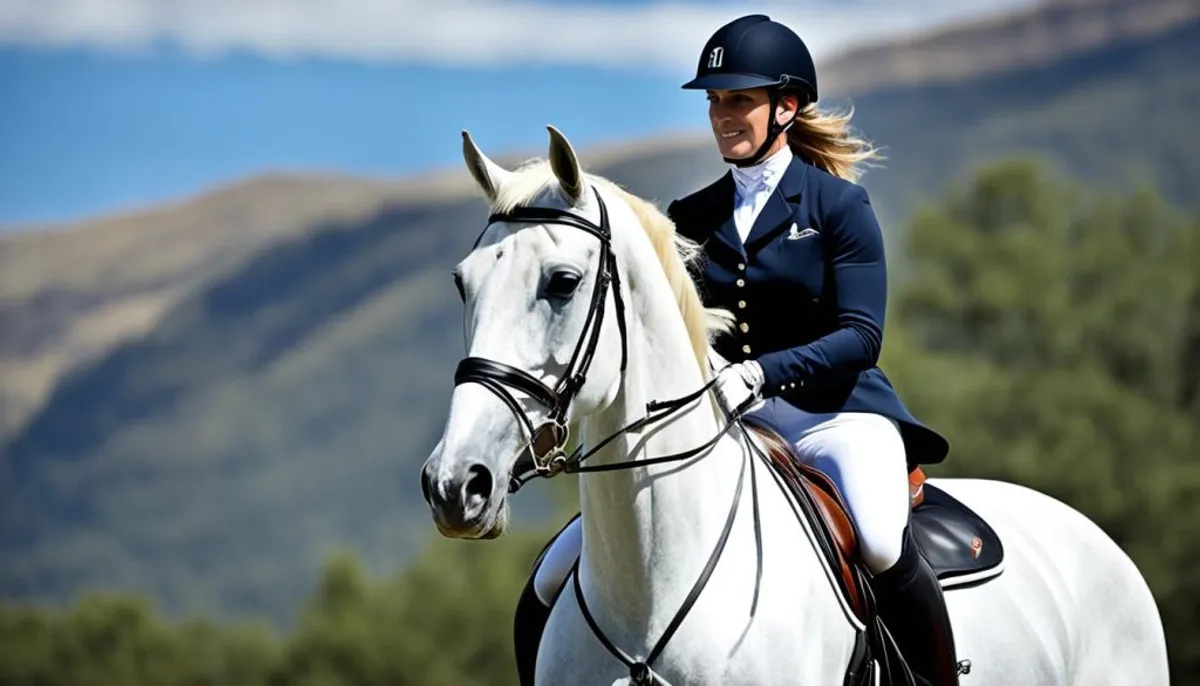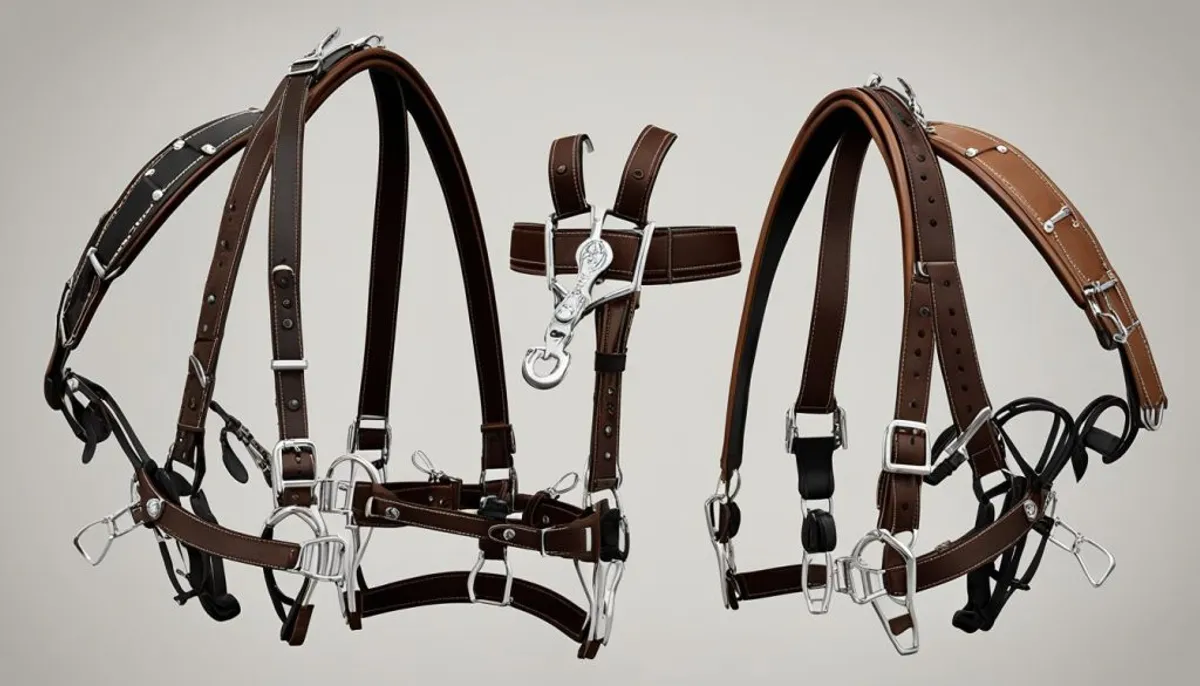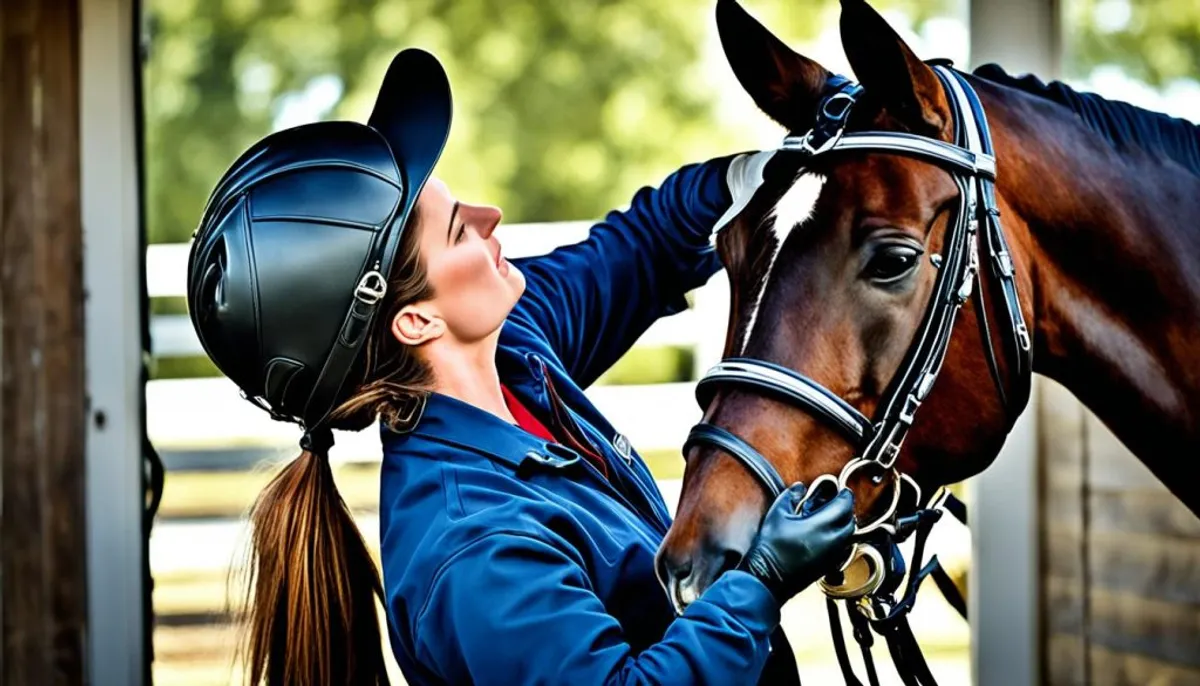The riding bridle is crucial for riders. It plays a major role in performance. Additionally, it affects the comfort and well-being of your horse. This comprehensive guide aims to facilitate the choice, use, and maintenance of the appropriate bridle. Thus, your equestrian experience will be both harmonious and safe. You will find an overview of the various types of bridles. We will explain their advantages and limitations. Furthermore, recommendations will help you choose the ideal bridle for your needs and those of your horse.

Main information to remember
- The riding bridle is essential equipment for riders
- It influences performance, comfort, and the horse's well-being
- This guide will help you choose, use, and maintain the right bridle
- Discover the different types of bridles and their characteristics
- Get advice to make the best choice for your horse
Introduction to the riding bridle
The riding bridle helps the rider communicate with their horse. It is more than just an accessory. It reinforces trust and mutual respect. Choosing the right type of bridle ensures the horse's well-being.
This equipment allows for subtle contact between the rider and the horse. A good bridle helps to better control the horse. It also ensures the safety of both the horse and the rider. The bridle is essential for teaching the horse.
The choice of bridle must be tailored to each horse. Each horse has unique needs. It is important to choose a bridle that respects the comfort of the animal.
We will explore in more detail the types of bridles, their characteristics, and advantages. We will give you tips for choosing the ideal bridle. This guide will help you select what is best for your horse.
What is a riding bridle?
The riding bridle, also called a headstall, is used to control the horse from its head. It is made up of several parts. For example, there is a headpiece, a noseband, a browband, cheekpieces, and a bit. All of this is connected to the reins.
Definition and characteristics
This equipment helps the rider guide the horse and communicate while being comfortable. It is about facilitating a good understanding between the rider and the horse. Each part plays an important role in this.
The side pull noseband
The side pull noseband is a special type of bridle. It is placed on the horse's nose, which is gentler than in its mouth. Some horses prefer this way of being ridden over a traditional approach. It helps to better understand the rider.
Advantages and limitations
The side pull has significant strengths, but it is not suitable for all horses. Proper use is crucial to enjoy its benefits. This avoids comfort and communication issues with the horse.

The different types of riding bridles
There are many types of bridles for riders to choose from. From simple bridles to dressing bridles, including hackamores and side pulls, each bridle has its specificities. Riders can thus select the best bridle for their horse and activity.
The simple bridle is very useful as it adapts to various equestrian practices. It is simple and comfortable for the horse. In contrast, the dressing bridle is more complex. It allows for fine control of the horse during dressing training.
The hackamore and the side pull differ from traditional bridles. The former works without a bit, acting directly on the horse's muzzle. The latter applies pressure on the nose and cheeks. These types of bridles allow for gentle and precise communication between rider and horse.
The western bridle and the anatomical bridle are more specific. The western bridle is primarily used in western sports. Meanwhile, the anatomical bridle offers great comfort, as it is adapted to the shape of the horse's head.
Each riding bridle has its advantages and disadvantages in terms of control, comfort, and communication. The ideal bridle will vary depending on the rider's goals, the type of horse, and the discipline practiced.
Choosing the right riding bridle
Choosing a good bridle is essential for comfort and safety. There are reputable brands known for the quality of their side pull bridles. They meet the specific needs of each rider-horse team.
The best brands of side pull bridles
Here are some well-known brands for their excellent side pull bridles:
- Nurtural Horse
- Barefoot
- Norton
- TdeT
- Stonedeek
- F.R.A. Freedom Riding Articles
- Karlslund
- Thor Equine
Tips to follow
To choose a riding bridle well, follow these tips:
- Look at the materials for horse comfort and durability.
- The fit of the bridle must be perfect. It ensures good communication between the horse and the rider.
- Choose a bridle that is easy to use.
- The quality of craftsmanship guarantees bridle quality and safety.
By following these steps, the rider will easily find the ideal riding bridle for themselves and their horse.
Basic usage and techniques
Choosing the right riding bridle is crucial. Then, it is important to learn how to use it correctly. It is essential to adjust the headpiece, the noseband, and the reins. This ensures the horse's comfort.
The horse's well-being depends on a properly fitted bridle. The basic techniques include the proper positioning of the noseband and the use of the reins. This allows for easy and safe horse-rider communication.
Adjusting the side pull bridle
- Place the headpiece on the horse's head so that it does not slip. It should not be too tight either.
- Then adjust the noseband so that it does not hinder the horse but stays in place.
- Finish by adjusting the length of the reins for light and constant contact with the horse.
Basic techniques
- Prepare your horse by petting and rewarding it. This will relax it before mounting.
- Use the reins gently. This is important for clear communication with the horse.
- Monitor your horse's reactions. Adjust your riding bridle usage if necessary.
Learning these basic techniques will help you communicate effectively with your horse. This contributes to your safety and that of your horse. Moreover, it promotes enjoyment in riding.
Maintenance and upkeep
It is crucial to keep your riding bridle in good condition. This ensures its longevity and proper functioning. The process includes regular cleaning, checking the condition of the materials, and proper storage when not in use. Taking care of your bridle ensures comfort and safety for your horse during riding.
First, clean the bridle thoroughly with warm water and a mild soap. Be gentle to avoid damaging the materials. After rinsing, let it dry before reassembling.
Second, closely inspect the condition of your bridle. Ensure that the stitching is strong, and that the straps and buckles are in good condition. If something is wrong, make minor repairs to keep it in good shape.
Finally, when you are not using your bridle, store it properly. Choose a dry place, away from direct sunlight and moisture. Do not fold it too much to avoid damaging it.
By practicing this care, you will increase the lifespan of your bridle. This will ensure comfort and safety for your horse on every ride.

| Maintenance steps | Recommended frequency |
|---|---|
| Cleaning | After each use |
| Condition inspection | Every 3 to 6 months |
| Minor repairs | As needed |
| Proper storage | When the bridle is not in use |
Riding bridle and safety
The use of the riding bridle is crucial for both the rider and the horse. Choosing a good bridle and adjusting it properly prevents injuries. It must be used responsibly for the comfort of both.
Putting the comfort and safety of the horse first ensures a safe practice. Here’s how to choose, adjust, and use a riding bridle safely:
- Choose a bridle suitable for the morphology of your horse and its level of training.
- Ensure that the bridle is correctly adjusted to avoid any friction or discomfort.
- Train yourself in the techniques of using the bridle for injury prevention.
- Regularly inspect your bridle to detect any signs of wear and replace it if necessary.
- Be aware of signs of stress or discomfort in your horse during the use of the bridle.
By following these rules, you ensure riding safety and the well-being of your horse. Proper management of the riding bridle enriches your equestrian adventure.
Conclusion
This guide has presented the various types of headstalls. It has explained their importance in the dialogue between the rider and the animal. You now know how to make the right decision for your horse.
It is crucial to prioritize your horse's comfort. This will help you build a relationship based on respect. Regardless of your level, this guide will enable you to choose the right equipment.
With this information, you will become an expert in headstalls. This will enhance your riding practice while ensuring your horse's well-being.
FAQ
What is a riding bridle?
The riding bridle, or headstall, goes on the horse's head. It helps the rider control and communicate with the horse. It consists of a headpiece, a noseband, a browband, cheekpieces, and a bit with reins.
What is the importance of the bridle in riding?
The bridle is essential for the rider and horse to understand each other well. It plays a major role in correct performance and the horse's happiness.
What are the different types of riding bridles?
There are several types of bridles, all different. We have the simple bridle, the dressing bridle, the hackamore, the side pull, the western bridle, and the anatomical bridle.
What are the best brands of side pull bridles?
Nurtural Horse, Barefoot, Norton, TdeT, Stonedeek, F.R.A. Freedom Riding Articles, Karlslund, and Thor Equine are well-known for their quality side pull bridles.
How to choose a riding bridle properly?
The choice of a bridle depends on several criteria. Consider the materials used, comfort, fit, durability, and ease of use. A good bridle aids communication between the horse and the rider.
How to use a riding bridle correctly?
To use a bridle properly, it must be adjusted correctly. The headpiece, noseband, and reins should be well set so that the horse is comfortable. It is also important to know some basic gestures for good communication and safe training.
How to maintain a riding bridle?
To keep your bridle in good condition, it must be maintained regularly. This involves cleaning all parts, checking the materials and stitching, and storing it properly when not in use.
Why is the proper use of the riding bridle important?
Using the bridle correctly is vital for the safety of the rider and the comfort of the horse. A poor bridle can injure the animal or cause behavioral issues. Choosing the right model, adjusting it correctly, and using it attentively is very important.
RelatedRelated articles



